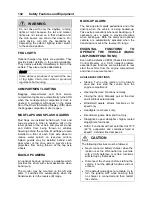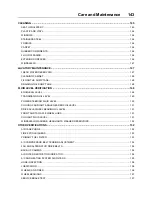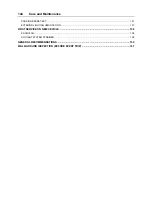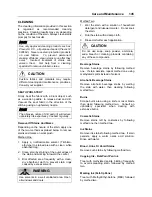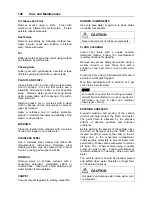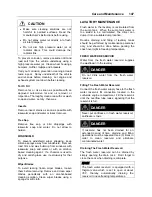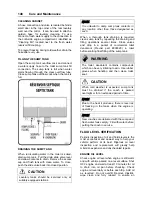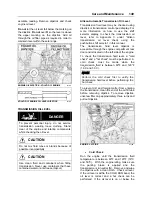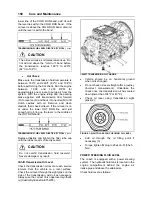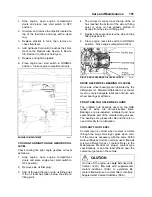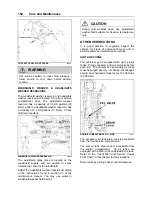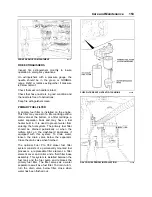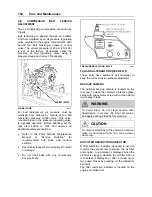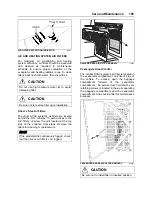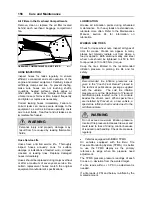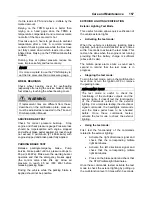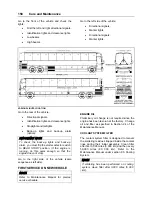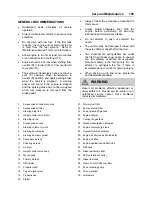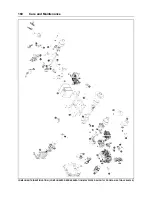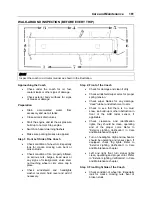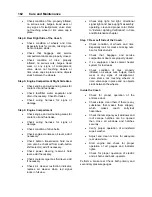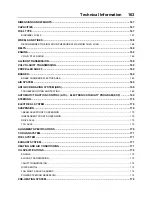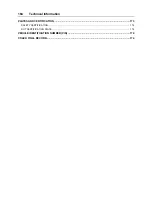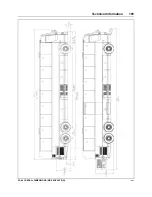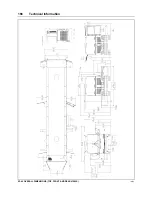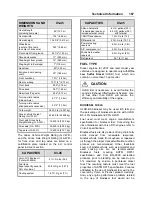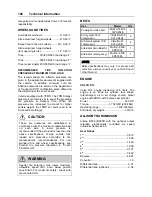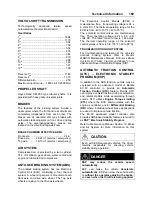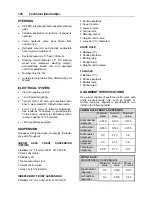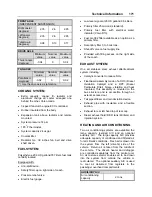
Care and Maintenance
156
Air Filters in the Overhead Compartments
Remove, clean or replace the air filter located
behind each overhead baggage compartment
fan.
OVERHEAD COMPARTMENT FAN AIR FILTER
22201
HOSE INSPECTION
Inspect hoses for leaks regularly to ensure
efficient, economical and safe operation of the
engine and related equipment. Carefully inspect
all fittings, clamps and ties. To prevent chafing,
make sure hoses are not touching shafts,
couplings, heated surfaces, sharp edges or
other parts. Since hose clamps and ties can
vibrate loose or fail over time, inspect frequently
and tighten or replace as necessary.
Correct leaking hoses immediately. Failure to
correct leaks can cause severe damage to the
equipment, as well as increase operating costs
due to lost fluids. Treat fuel and oil leaks as an
immediate fire hazard.
WARNING
Personal injury and property damage may
result from fire caused by leaking flammable
fluids.
Hose Service Life
Hoses have a limited service life. Thoroughly
inspect hoses annually. Look for surface
damage or indications of twisted, worn, crimped,
cracked or leaking lines. Replace damaged
hoses immediately.
Hoses should be replaced during major overhaul
or after a maximum of seven years service. Be
certain replacement hoses match the original
equipment manufacturer's specifications.
LUBRICATION
Grease all lubrication points during scheduled
maintenance. For heavy loads or extended use,
lubricate more often. Refer to the Maintenance
Manual, section 24 for information on
lubrication.
WHEELS AND TIRES
Check for loose wheel nuts. Inspect all types of
rims for cracks. Cracks can appear in many
places but typically radiate out from where a
load is applied. Both aluminum alloy and steel
wheel nuts should be tightened to 450 to 500
foot-pounds (610 to 680 N.m.) torque.
Keep the tires inflated to the recommended
inflation pressure to prolong tire life and for
safety.
NOTE
Recommended tire inflation pressures are
given in the "Coach Final Record", placed in
the technical publications package supplied
with the vehicle. The cold tire inflation
pressures are on the Department of Transport
certification plate located on the L.H. console
besides the driver’s seat. When special tires
are installed by Prevost on a new vehicle, a
special tire inflation chart is added next to the
certification plate.
WARNING
Do not exceed maximum inflation pressure.
Incorrect tire pressure increases tire wear and
could lead to loss of driving control because
of reduced road handling. Check tire pressure
regularly.
•
Vehicles equipped with BERU TPMS
On vehicles equipped with the Beru Tire
Pressure Monitoring System (TPMS), it is better
to use the TPMS display as the primary
reference to judge when tire pressure need
adjustment.
The TPMS presents pressure readings of each
tire as a +/- deviation from the wanted target.
If a tire reads /- 3 PSI no adjustment is
needed.
If a tire reads -4 PSI and below, re-inflate by the
marked amount.
Summary of Contents for X3-45 2011
Page 1: ...COACH MANUFACTURER OPERATOR S MANUAL X3 45 COACH PA1581...
Page 4: ......
Page 6: ......
Page 10: ......
Page 24: ......
Page 128: ......
Page 134: ......
Page 171: ...Technical Information 165 X3 45 OVERALL DIMENSIONS SIDE ELEVATION 18673...
Page 172: ...Technical Information 166 X3 45 OVERALL DIMENSIONS TOP FRONT AND REAR VIEWS 18674...
Page 182: ......
Page 186: ......
Page 206: ......

